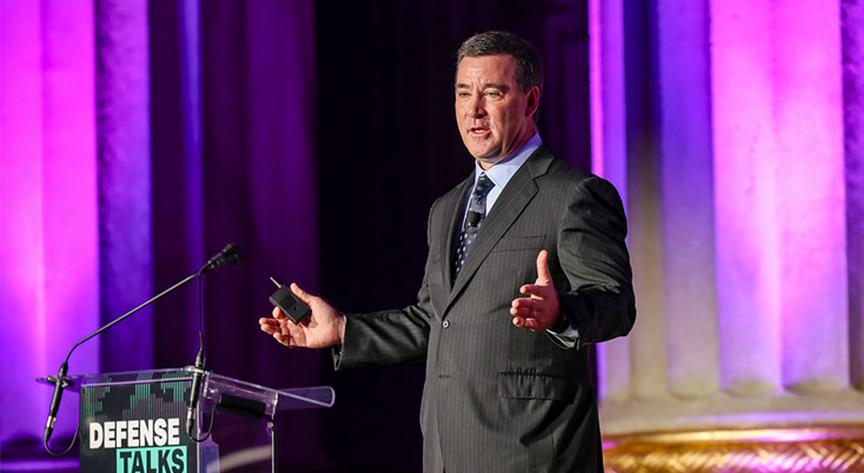- Sponsored
- Insights
How the DOD can harness AI for innovation and efficiency

From healthcare to agriculture and manufacturing, artificial intelligence is altering industries worldwide. And although AI is not a panacea, its transformative potential is undeniable. AI’s versatility and capacity allow it to streamline processes, enhance efficiency and innovate traditional processes.
During a presentation at DefenseTalks in May 2024, Wes Anderson, vice president, defense operating unit, at Microsoft Federal, not only highlighted AI’s far-reaching impact across sectors but also its implications for the Department of Defense (DOD).
“We all know this is a time of great power competition, one with unprecedented near-peer competitors that have the will, economic means and an industrial base to enable their ambitions,” said Anderson. “One of the questions I often get is, how can you help the DOD bring innovation to their mission, and how can you help us accelerate pace? An area where we’re seeing that potential is with AI.”
AI in action
A pivotal moment in AI’s advancement was the emergence of ChatGPT, which demonstrated AI’s capability to achieve mass adoption rapidly. While technologies like mobile phones took 16 years to reach 100 million users and the Internet took 7 years, ChatGPT achieved this milestone in just 60 days in January 2023. “This swift adoption highlights a significant leap from traditional AI to generative AI, powered by advanced foundational models trained on vast datasets using cloud-based supercomputers,” he said.
Anderson cited a collaboration between Microsoft’s Azure Quantum team and Pacific Northwest National Labs to reduce dependency on lithium by developing new battery materials. Traditionally, this process would take years, but with AI and cloud-based supercomputers, the team reduced 30 million candidate elements to one viable electrolyte in just two weeks. “This breakthrough illustrates AI’s potential to revolutionize research and development timelines across various fields, including the defense sector,” said Anderson. “Ultimately, these models can help us make informed decisions across massive amounts of disparate data and will benefit how the Defense Department does business and executes its mission.”
AI’s impact also extends to enhancing workforce efficiency. Anderson cited Microsoft and LinkedIn’s 2024 Work Trend Index Annual Report, which revealed that two-thirds of employees feel they lack the time or energy to complete their work, hindering innovation and strategic thinking. AI can alleviate this burden by automating routine tasks and enabling workers to focus on more critical, value-added activities. In the defense sector, Anderson said AI can help the U.S. address the shortage of people and skills to help defend the nation by enabling better decision-making and upskilling.
Secure and ethical AI implementation
However, Anderson also acknowledged that the DOD faces unique challenges in adopting AI, particularly concerning data security. To address this, he discussed the deployment of GPT-4 within secure environments, ensuring that sensitive information remains protected while leveraging AI’s capabilities. “This approach exemplifies how AI can be integrated into critical operations without compromising security, thereby driving innovation and efficiency within the defense sector,” said Anderson.
In addition, ethical considerations are paramount when it comes to AI deployment within the DOD. Anderson stressed the need for responsible and ethical AI practices that align with the DOD’s guidance. “Implementing guardrails ensures AI is used in ways that are safe, fair, and beneficial to all stakeholders,” he said.
Adapting to an AI-driven future
Anderson also underscored the importance of cultural and organizational change alongside technological adoption. AI’s full potential can only be realized if the workforce adapts to new ways of working. “It’s not just about the technology. The technology can enable you to move really quickly, but it’s only going to be as quick as your workforce can move,” said Anderson. “So, you have to change the culture. You have to change how people work by bringing them along from the start and letting them get comfortable with AI.”
While AI holds transformative potential across industries and within the DOD, realizing its full benefits requires a balanced approach that integrates technology with cultural and ethical considerations and prioritizes both technological advancement and workforce adaptation.
Learn more about how Microsoft can help government organizations transform in the era of AI, sign up for news and updates at https://aka.ms/AIforGovUpdates.
This article was produced by Scoop News Group and sponsored by Microsoft.






